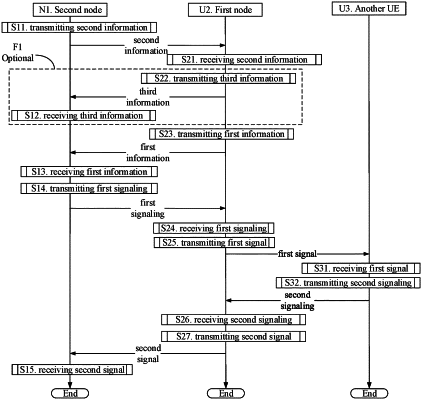| CPC H04W 74/0816 (2013.01) [H04L 27/0006 (2013.01); H04L 27/26025 (2021.01); H04W 72/0446 (2013.01); H04L 5/001 (2013.01); H04W 4/40 (2018.02)] | 20 Claims |

|
1. A first node for wireless communications, comprising:
a first receiver, receiving a first signaling;
a first transmitter, transmitting a first signal;
a second receiver, receiving a second signaling; and
a second transmitter, transmitting a second signal;
wherein the first signaling is used to determine time-frequency resources occupied by the first signal, the first signaling is used to determine radio resources occupied by the second signal, and time-frequency resources occupied by the first signal are used to determine radio resources occupied by the second signaling; a length of a time interval between an end time for receiving the second signaling and a start time for transmitting the second signal is equal to a first delay, and the end time for receiving the second signaling is earlier than the start time for transmitting the second signal; the first delay is not less than a reference delay, and the reference delay is related to a subcarrier spacing (SCS) of a subcarrier occupied by the second signal in frequency domain; the second signaling is used to determine information carried by the second signal, information carried by the second signal is the same as HARQ-ACK (Hybrid Automatic Repeat Request-Acknowledgement) information carried by the second signaling, and a transmitter of the first signaling is different from a transmitter of the second signaling; the first signaling carries DCI (Downlink Control Information), the first signal is transmitted through a PSSCH (Physical Sidelink Shared Channel), the second signaling is transmitted through a PSFCH (Physical Sidelink Feedback Channel), and the second signal is transmitted through a PUCCH (Physical Uplink Control Channel) or a PUSCH (Physical Uplink Shared Channel).
|